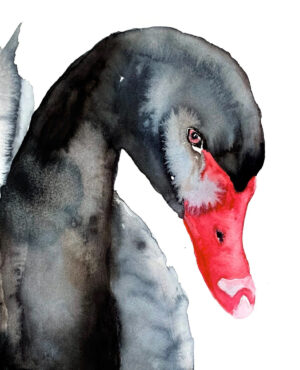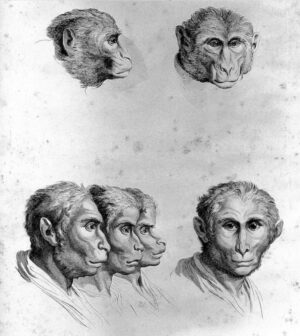
What does it mean to be you?
If I were to ask you to describe your “self”, you might come up with a series of adjectives.
Here are some adjectives that people with an Enneagram Four personality style often identify with.
| ME | NOT ME |
|---|---|
| artistic & imaginative | logical & literal-minded |
| authentic | follow the herd |
| creative | stagnant |
| deep feelings | shallow |
| good taste | crass |
| intense | laid back |
| introspective | thoughtless |
| intuitive | obtuse |
| melancholic | light-hearted |
| misunderstood | easy to get to know |
| mysterious | predictable |
| nostalgic | here and now |
| passionate | pedestrian |
| refined/classy/elite | crude/boorish/trendy |
| ritualizing & spiritual | trivializing & mundane |
| romantic | unromantic |
| sensitive | rough |
| symbolic | concrete |
| yearning | having |
| romantic | utilitarian |
You might also recognise in reading this, that not everyone is like you. In fact, only about 15% of the population have your personality style.
This is really important to bear in mind when it comes to our dealings with other people. Because we cannot help but be ourselves, as well as see the world through the lens our own personality style, we often assume that other people might think, feel, and respond to us and their situation in a similar way. This is often the cause of a great deal of conflict and upset in our lives.
Other than the above adjectives, what does it really mean to be YOU.
Here are some other factors that are reported to hold true for those who identify with a Four personality style.
Fours are…insightful, melancholy creative, and analytical. Fours are motivated to be seen as authentic, deep, intuitive, and original. They have a deep need to express their emotional experiences and share their innermost feelings in the hopes of being seen and mirrored. Fours often seek emotional intensity to compensate for feelings of inadequacy, lack, and meaninglessness.
Primary Motivation: To be seen as authentic, deep, intuitive, original, beautifully flawed
Common Adjectives: Intuitive, empathetic, creative, sad, intellectual, tasteful, elegant, beautiful, monster, hateful, envious
Other People Sometimes Describe Me As: Aloof, sensitive, intuitive, intellectual, moody, snobby, remote
Strengths: Creating beauty, analyzing self and others, creating meaning, insightful, truth-telling, sensitivity
Weaknesses: Rumination, depression, lack of confidence, envy, jealousy, feeling lost, easily discouraged
Personal Image Style: Elegant, tasteful, creative, interesting, one of a kind, unique, beautiful, striking, rare, original, irresistible, natural, bohemian
I Avoid People Who Are: Shallow, unintelligent, boring, superficial, too happy, “basic”
Biggest Fears: Lack of meaning, being forgotten, ordinariness, inadequate, consumed by grief, not reaching potential, feeling lost or abandoned
It Upsets Me When Other People: Are harsh or unkind, mistreat others, are controlling, too positive, invalidating, unrefined, or insensitive
I Avoid Feeling: Ordinary, flat, too depressed, uninspired, too happy, content, lost, inadequate
Fours Need: Time and space to develop their potential, intensity, creativity, freedom
[Mosley, 2023]
WHAT HAS ANY OF THIS GOT TO DO WITH WHAT I’M DEALING WITH IN MY LIFE AT THE MOMENT?
Discovering and understanding our core personality traits seems to be a crucial step towards personal growth and healing. If you resonate with the characteristics detailed above, you might be wondering how this awareness can contribute to your self-discovery or therapeutic journey.
A guiding idea of our exploration is that our personality has a “baseline” tendency, the usual manner in which it interacts with life’s happenings. These interactions often follow recognisable patterns that reflect our innate dispositions. Through a thoughtful analysis of these responses, we might understand better how we function.
This understanding can help us discern whether we are leveraging our strengths, being the best versions of ourselves (i.e. our personality configuration) or if we are inadvertently entangling ourselves in webs of self-generated misunderstanding and distress. In essence, the goal here is to cultivate a form of self-awareness that helps us navigate life’s complexities with kindness, clarity, and resilience.
Now, let’s delve into specific Functional Levels associated with your personality style, breaking this down into three categories:
HEALTHY/ABOVE-AVERAGE FUNCTIONING
Level 1: At our best, we are profoundly creative, with the ability to express both personal and universal themes, possibly through works of art. Our lives are marked by inspiration, self-renewal, and regeneration. We can transform all of our experiences into something of value, making us self-creative.
Level 2: We are self-aware and introspective, consistently in search of ourselves. Our understanding extends to our feelings and inner impulses. Sensitive and intuitive to both self and others, we exemplify gentleness, tact, and compassion.
Level 3: We are highly individualistic, remaining true to ourselves. We aren’t afraid to reveal our authentic selves and to be emotionally honest and humane. Our ironic view of self and life allows us to be both serious and funny, vulnerable yet emotionally strong.
AVERAGE FUNCTIONING
Level 4: We adopt an artistic and romantic approach to life, cultivating a beautiful, aesthetic environment to nurture and prolong personal feelings. Our perception of reality is heightened through fantasy, passionate feelings, and imagination.
Level 5: In order to stay connected with our feelings, we tend to internalize everything, making things personal. However, this can lead to becoming self-absorbed, introverted, moody, and hypersensitive. We might appear shy and self-conscious, struggling with spontaneity. We withdraw to protect our self-image and provide time to sort out our feelings.
Level 6: Gradually, we may begin to see ourselves as different from others and believe we are exempt from living as they do. We may become melancholic dreamers, disdainful, decadent, and sensual, finding solace in a fantasy world. Envy of others and self-pity lead to self-indulgence, and we become increasingly impractical, unproductive, unproductive, and precious.
NOT DOING THAT GREAT
Level 7: When dreams fail to materialize, we inhibit ourselves, becoming angry and depressed, feeling alienated from ourselves and others. We might feel ashamed and fatigued, finding ourselves blocked and emotionally paralyzed, unable to function.
Level 8: Tormented by self-contempt, self-reproaches, self-hatred, and morbid thoughts, everything becomes a source of torment. Blaming others, we push away anyone who attempts to help us.
Level 9: In a state of despair, we may feel hopeless and become self-destructive, potentially turning to substances such as alcohol or drugs to escape. In extreme cases, we may experience emotional breakdowns or suicide. This level generally corresponds to the Avoidant, Depressive, and Narcissistic personality disorders in terms of psychiatric diagnoses.
[Source: Riso & Hudson, 1996]
As you reflect upon these concepts, ask yourself where you frequently identify your position within this metaphorical ladder of perception. In which rung of your self-forged reality do you find the most comfort, and where do you feel confined at times? It’s completely natural for us to transition through these stages in the course of our day. Nevertheless, we might occasionally sense ourselves anchored on a certain rung, particularly during times of significant emotional turmoil in our lives.
This understanding can serve as a launching pad for some therapeutic dialogues, if you wish.
Unless you are comfortably situated within the most balanced areas of your personality, we might choose to delve into more exploratory conversations concerning the parts where you’re facing significant difficulties.
These challenges often arise, you might have noticed, where the personal “self” – largely dwelling in the Imaginary Realm (a Lacanian concept referring to our subjective experience of the world shaped by our desires and perceptions) as well as the Symbolic Realm (the structured world of societal norms, language, and relationships) – collides with the Reality of the world and other individuals.
The Real, according to Lacan, is “that which does not depend on my idea of it” (Ecrits, 1966)
A good definition of suffering then might be something like: the intense emotional dissonance experienced when our subjective interpretations (drawn from the Imaginary and Symbolic realms) clash with the undeniable and independent nature of the Real.
Consider the following reflective questions based on your current Overall Level of Functioning:
1. In which of the developmental levels do you find yourself most frequently and why do you think this is the case?
2. Can you identify a recent situation where you felt “stuck” at a lower level? What were the circumstances, and how did it make you feel?
3. How does oscillating between different developmental levels affect your relationships, both personal and professional?
4. What coping mechanisms do you currently employ when you find yourself at lower levels, and how effective are they?
5. Are there any recurring triggers that seem to pull you towards lower levels, and how might you manage these more constructively?
EXPLORING THE DEPTHS OF YOUR INSTINCTUAL IDENTITY OR “INNER ANIMAL”

Other than the above traits and personality type configurations, what does it really mean to be YOU?
Here’s a simple equation which I believe has profound implications for how we understand our “selves”, also our life situation, past/present/future, and most importantly for our therapy journey together, how we deal with upset and suffering in our lives.
YOU = INSTINCTS/LIFE FORCE/ENERGY + NATURE/TEMPERAMENT/PERSONALITY + NURTURE/CULTURE/LIFE-CIRCUMSTANCES
Let me break that down a bit for us.
INSTINCTS/LIFE FORCE/ENERGY
We often forget that we are animals. Human animals, but animals nonetheless.
What kind of animals are we? We are mammals, we are primates. And like all animals, we are “ruled” to some extent by our instincts.
Instincts are very simply our natural, automatic behaviours and reactions that have evolved over time to help us survive and thrive. These instincts are innate and serve to guide us through various aspects of our life.
As you read about the three most important human-animal instincts below that make up (y)our “life force”, ask yourself the following all-important question as a human-animal: which of these instincts “dominates” my life as a living creature, by and large?
Even though we utilise all three instincts, generally speaking, our basic functioning relies more heavily on one instinct (our dominant instinct), followed by a secondary “assistant” instinct, while a third instinct is usually “repressed” or under-utilised in some way.
This is because our life-force isn’t limitless (both whilst alive, and clearly when dead), and so our nervous systems and innate, instinctual functioning is often forced to make automatic instinctive choices for us in terms of where we focus our energies.
When you read through the following needs and focus of each of your three instincts, have a think about where your life-force mainly gets channeled (this would be your dominant instinct), as well as which instinct isn’t being given enough energy or attention:
THE SELF-PRESERVATION INSTINCT’S NEEDS AND FOCUS:
Self-care and wellbeing:
(1) Diet, (2) exercise, (3) sleep/rest, (4) relaxation (time in solitude, walk in nature, meditation, yoga, etc.), (5) adequate stimulation (reading, listening to music, healthy sex life, watching documentaries, etc.)
Maintenance and resources:
(1) Money/finances, (2) time-management (self-management, time to self, time with others, being on time, etc.), (3) practical application and skills (being able to address practical needs, fix things, manage life, etc.), (4) work habits/persistence (the ability to follow through, finish tasks, discipline, habits around practical ventures, ways you are handy, etc.), (5) energy management ((how we use our energy, deal with stress, balance silence with activity, etc.)
Domesticity and home:
(1) Comfort/domesticity, (2) safety/security, (3) structure supports life/base of operations (home management, home as a solid launchpad), (4) beauty and holding (comfortable and inviting living/workspace, feeling held by your home, etc.), (5) recharging/restoration (home as a place to restore).
[Further exploration: Is Your Self-Preservation Instinct Balanced, Over-Dominant, or Impaired? How does the Self-Preservation Instinct function in your life and show up in your personality style?]
THE ONE-ON-ONE/SEXUL INSTINCT’S NEEDS AND FOCUS:
Broadcasting and charisma:
(1) Transmitting (initiating energy that broadcasts), (2) display (doing behaviours to get yourself noticed, (3) being attracted and following energy, (4) choosing/fitness (evaluating attraction; auditioning and being aware of being auditioned), and (5), competition/winning.
Exploration and edge:
(1) Activation and arousal, (2) taking risks and having adventures, (3) getting out of comfort zone (breaking habits and feeling soggy in routine), (4) seeking stimulation, and (5) following and honouring impulses and inspirations.
Merging:
(1) Disappearing into something or someone (which is restorative as it gets us away from the egoic self), (2) intense focus and concentration applied to an activity, (3) losing boundaries and sense of self, (4) spending energy (pouring self into something and giving self wholeheartedly), and (5) seeking fusion and at oneness.
[Further exploration: Is Your Sexual/One-on-One Instinct Balanced, Over-Dominant, or Impaired? How the Sexual/1-on-1 instinct function in your life and show up in your personality style?]
THE SOCIAL INSTINCT’S NEEDS AND FOCUS:
Reading people and situations:
(1) Reading facial expressions/body language/tone of voice/moods, (2) reading between the lines, (3) interest in others/attunement/tuning in, (4) empathy/concern, and (5) adapting to cures/adjusting behaviour.
Connecting:
(1) Creating relationships: engaging others, (2) sustaining relationships: maintaining connections and knowing when to end them, (3) communication—speaking and listening, (4) cooperation/reciprocity and (5) play/shared enjoyment/celebration.
Participation:
(1) Getting involved or not: what do I participate in?, (2) need to contribute: something beyond my own needs, (3) enrolling: getting others interested and involved in what I am passionate about, (4) part of something bigger/sense of place, (5), belonging and welcoming.
[Further exploration: Is Your Social Instinct Balanced, Over-Dominant, or Impaired? How the Social Instinct function in your life and show up in your personality style?]
Instincts generally work and shows up for us subconsciously. This means that we might be thinking or feeling or behaving in certain ways that are largely governed by our instincts, even though we are unaware of them at work within us.
As we seem to be dominated by ONE of the three instincts, as well as under-utilising aspects of the other two, it can be helpful to consider ways in which we balance our instinctual drives throughout the day, as well as in our lives in general.
This is something we can discuss more when we meet and begin to reflect on your life and the situations you are dealing with at the moment.
NATURE/TEMPERAMENT/PERSONALITY

“You” were once a baby. Babies don’t have fully-formed and expressive ego-functioning styles (aka personalities) which usually only come online in mid-childhood. But even as infants, we all have a very definite temperament or “nature”.
Regardless of our environment when growing up, some babies are more social, or playful, others less so. Some babies are generally quite compliant or easy-going, others are more difficult or demanding. Again, like our instincts, this stuff is just hard-wired into us as human-animals.
As with our instincts, we often forget or downplay our “natural temperament” when it comes to assessing or thinking about our lives, which can cause a great deal of emotional pain and suffering as our expectations on ourselves (as well as others) might be completely out of whack with who we really are and how we function, for better and for worse.
Our adult personality style is really just the “flowering” or “above ground” aspect of our temperamental/instinctual roots. This style will be affected by our upbringing to some extent (see the next section: NURTURE), just as a plant will grow in a more robust way in certain environments rather than others. But it’s probably wise to understand first and foremost whether we are a rose bush, or an orchid, or a sunflower.
Unlike plants we have a nervous system wired up to a brain stem, as well as a right and left-hemisphere which allows for more complex processing of our instincts and natural inclinations.
When our dominant instinct (self-preservation, social, or one-to-one/sexual) is combined with our core personality type, we get a more nuanced understanding of our personality (i.e. a subtype).
If you would like to check out how your three “instincts” move with/against your personality type, have a read/listen to this article on Three Ways To Be Four.
Each of the subtypes described will capture an aspect of “You” (as we have all three instincts), but you will probably also find that one subtype speaks more directly to how you identify as You.
If none of these subtypes speak to you, you may decide to look at another personality style from those I provide here, as perhaps Four doesn’t “fit” the You you most identify with.
If possible, please make a note of the subtype that best identifies You and the qualities you identify with, as this will be useful for your understanding of yourself and how You function. It will also give us some useful “scaffolding” with which to explore your current life circumstances and how You are experiencing them.
If you’d prefer to watch a video, or listen to a podcast outlining the qualities of the Four subtypes, I’d recommend the following:
NURTURE

The interplay between nature (genetics) and nurture (environmental factors) is complex and multifaceted, making it difficult to determine the precise extent to which our life-force/instincts + temperament/nature/ego functioning are influenced by upbringing and trauma. However, it is widely accepted that both nature and nurture play significant roles in shaping our personality, temperament, and ego.
Some key aspects of the nurture side of things which would be good to explore together when understanding “you” and how you show up in the world include: parenting styles, cultural influences, socio-economic status, and traumatic experiences. These factors can contribute to the formation of an individual’s temperament and ego functioning, but they don’t necessarily alter our basic instinctual and temperamental settings.
It is important to note that the influence of environmental factors can vary from person to person, depending on individual genetic predispositions and resilience. Some people may be more susceptible to the effects of upbringing and trauma, while others may be more resilient.
Understanding the complex interplay between nature and nurture is essential understanding how you function, and is built into the Five Factors that constitute my integrative way of doing psychotherapy.
This is something we will always need to bear in mind when thinking about “you”.
I look forward to doing this with you soon.
